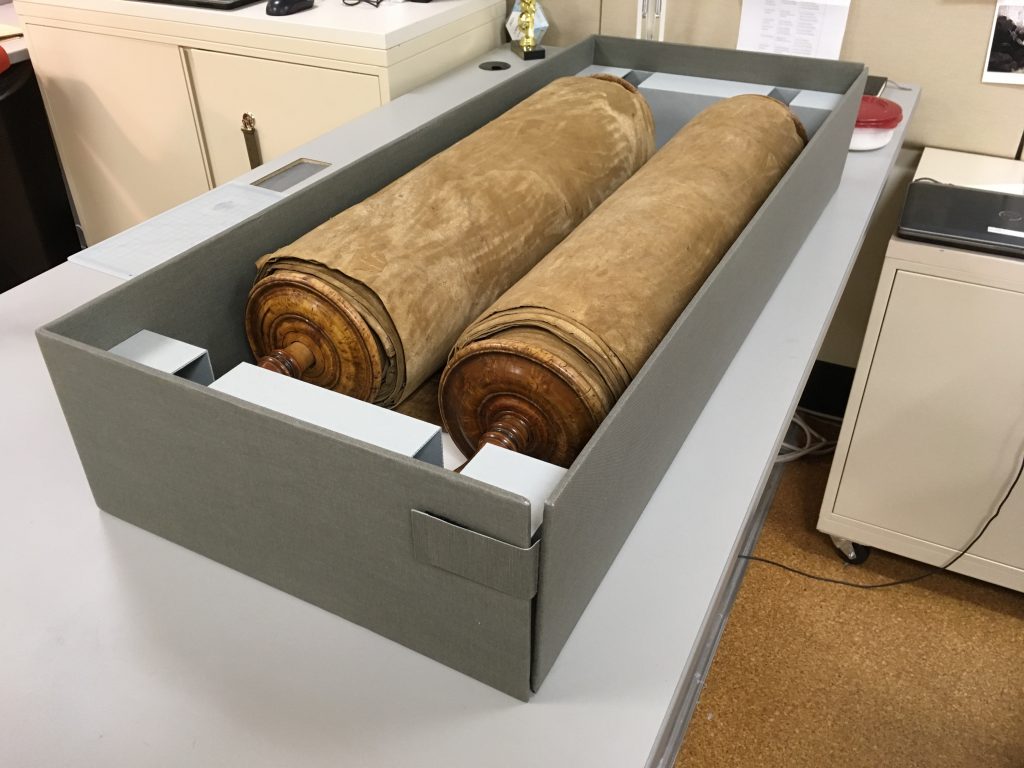The Rubenstein Library recently acquired another large Torah scroll. Measuring 40″ in length, these scrolls can be quite heavy and difficult to move safely. The support on which the scroll arrived was minimal and inventive.
The scroll was wrapped in layers of cotton muslin, with cotton twill tape laced through honeycomb board to secure it. Honeycomb board is light enough for two people to easily lift, but rigid enough that it doesn’t bow or cause the scroll to shift. At the time of acquisition, we discussed keeping this support. After considering the necessary handling and pathway through the building to serve the scroll in the reading room, however, it was decided that a full enclosure would offer more protection.
Longtime readers may remember when Beth boxed a similar scroll a few years ago, and more recently you might have seen Tedd’s series on Extreme Enclosures. Each of these large enclosures employs double layers of corrugated board, covered in buckram, to cut down on weight while remaining durable enough for long term handling. Beth’s Torah enclosure is nearing its seventh birthday, so I thought this would be a good opportunity to see how it has aged. Can the double-wall corrugated board really stand up to the abuse of regular handling and re-shelving?
It turns out the box (pictured above without its telescoping lid) is still in very good shape. Despite many trips to the reading room and all the activity of the Rubenstein Renovation, the enclosure shows no wear or distortion from the weight of the contents. Research Services staff report that the lighter weight makes re-shelving (with two people) quite easy and the drop-wall design allows for convenient removal of the heavy scroll from the box.
Considering the success of the first box, I decided to adopt the popular idiom of “if it ain’t broke, don’t fix it” and duplicated the design for the recently acquired Torah.
Library conservators are often called upon to creatively engineer solutions to unique preservation problems. With ever growing and diversifying collections, it sometimes feels like all our attention is pulled toward the next object coming through the door. It’s nice to have the opportunity to go back and critically review some of those solutions, but nicer still to see that, years later, they are still working as they should.





